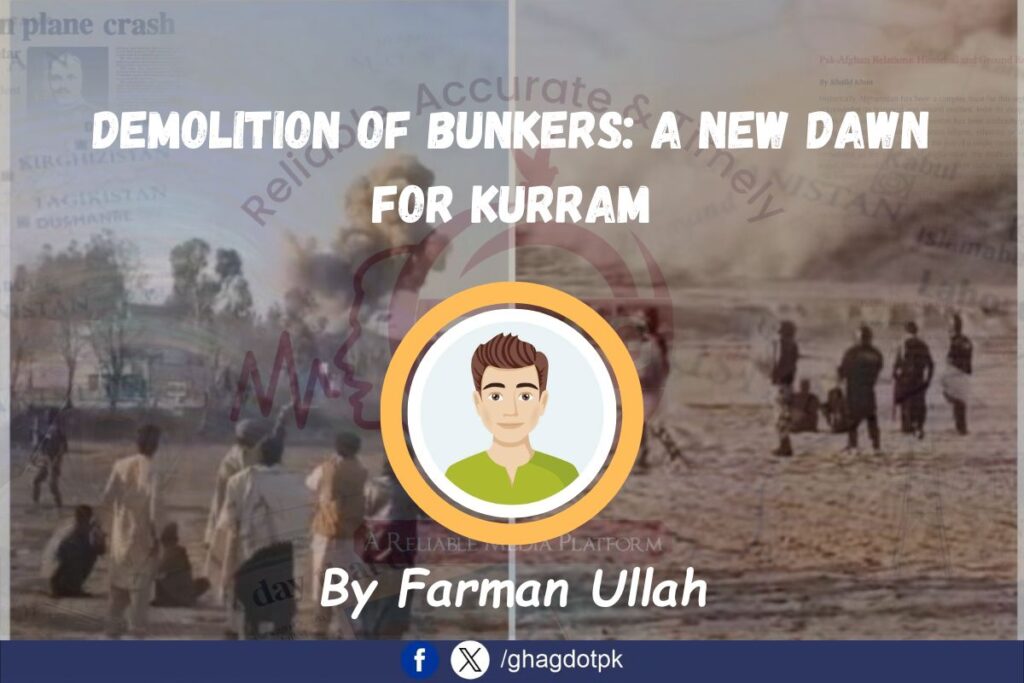By Farman Ullah
The Kurram Peace Agreement represents a landmark effort to address the deep-rooted ethnic and sectarian conflicts that have plagued the Kurram District for decades. Situated in the strategically vital northwestern region of Pakistan, Kurram has long been a focal point of tension due to its diverse demographic makeup and proximity to the Afghan border. The agreement, finalized after protracted negotiations involving federal and provincial governments, security forces, tribal elders, and religious leaders, seeks to dismantle militant strongholds, rebuild trust among communities, and restore peace to the region.
Background of the issue
Kurram District, part of the tribal belt now incorporated into Khyber Pakhtunkhwa province, has historically been marred by sectarian divisions, primarily between its Sunni and Shia communities. These divisions have periodically escalated into violent clashes, resulting in substantial loss of life, large-scale displacement, and long-lasting social fractures.
The situation deteriorated further during the post-9/11 era, as militant groups exploited these divides to establish control over the region. Kurram’s strategic location as a conduit between Pakistan and Afghanistan made it a target for both local and international militant networks. The persistent violence, compounded by blockades of vital supply routes, including the Parachinar-Thall road, created a humanitarian crisis that demanded immediate attention.
Recognizing the urgent need for a sustainable resolution, stakeholders initiated comprehensive peace talks. The involvement of local tribal elders, religious leaders, and security forces ensured that the agreement addressed the concerns of all parties.
Key Provisions of the Kurram Peace Agreement
Demolition of Bunkers
One of the most significant measures under the agreement is the demolition of bunkers and fortified positions used by militants and warring factions. These bunkers, scattered across key areas, had become enduring symbols of conflict and division. Their presence not only perpetuated insecurity but also prevented the normalization of life in the region.
Under the supervision of security forces and with the cooperation of local authorities, these bunkers are now being systematically dismantled. This move aims to eliminate physical reminders of conflict and deter future violence by removing strategic advantages from any potential combatants.
Cessation of Hostilities
The agreement mandates an immediate halt to hostilities between Sunni and Shia communities. Leaders from both sides have pledged to respect the rights and traditions of each other, ensuring peaceful coexistence. A conflict resolution mechanism has been established to address disputes through dialogue and arbitration, reducing the likelihood of renewed violence.
Restoration of Infrastructure and Access
The reopening of key roads, particularly the Parachinar-Thall route, is another cornerstone of the agreement. This route, a lifeline for the people of Kurram, had been frequently blockaded, causing severe hardships. By ensuring unobstructed access, the agreement seeks to revive economic activities, facilitate trade, and restore normalcy for the local population.
Role of Security Forces
Security forces have been entrusted with the critical role of monitoring compliance with the agreement. Enhanced patrolling, checkpoints, and intelligence-sharing mechanisms aim to prevent any violations. Their impartial presence is intended to reassure all stakeholders of the state’s commitment to maintaining peace and stability.
Challenges and Concerns
While the Kurram Peace Agreement is a promising development, its implementation faces several challenges. Mistrust between factions remains deeply entrenched, raising concerns about the durability of the truce. The dismantling of bunkers, though symbolic, may encounter resistance from groups that perceive it as a loss of power.
Moreover, the agreement’s long-term success depends on addressing the underlying socio-economic disparities that have fueled resentment. The government must invest in development programs, including education, healthcare, and employment opportunities, to build a foundation for lasting peace.
Media and Public Perception
Prominent newspapers and televisions have extensively covered the Kurram Peace Agreement, highlighting its potential as a model for resolving similar conflicts in other parts of Pakistan. Editorials have praised the inclusive approach adopted during negotiations, which empowered local stakeholders to take ownership of the peace process.
Columnists have also emphasized the symbolic importance of dismantling bunkers, viewing it as a tangible step toward demilitarizing the region and fostering trust. However, some analysts have cautioned against complacency, urging continued vigilance to prevent a relapse into violence.
The Kurram Peace Agreement marks a pivotal moment in the region’s tumultuous history. By addressing immediate concerns such as the demolition of bunkers and the restoration of vital infrastructure, the agreement lays the groundwork for sustainable peace. However, achieving lasting stability will require concerted efforts to bridge social divides, promote economic development, and maintain security.
As the people of Kurram cautiously embrace this new chapter, the agreement stands as a testament to the power of dialogue and collective action in overcoming adversity. With continued commitment from all stakeholders, Kurram can aspire to become a model of harmony and resilience, inspiring similar initiatives in other conflict-ridden areas of Pakistan.






